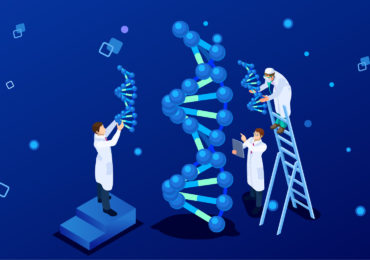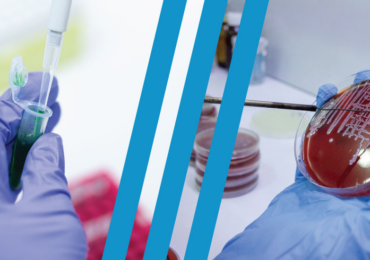Copying and detecting the presence or absence of a target sequence
We are often asked to define and compare testing methods for industrial users seeking to upgrade and optimize their programs. LuminUltra provides the GeneCount® Q-series Real-Time (RT) PCR devices. So how does it work? The quick answer is: PCR (or polymerase chain reaction) is a technique for multiplying a specific strand of DNA or RNA millions of times by manipulating the cell’s natural machinery. The manipulation is a highly controlled thermo-chemical reaction. “Once multiplied or “amplified”, the identifier — the target DNA — can be readily detected though a variety of methods in real time.
But how does it work? PCR, as it was developed by Dr. Kary Mullis in the 1980s, is a fairly straightforward process. The chemistry part involves taking a strand or segment of DNA (what’s in your test sample), add the building blocks that make the ladder rungs of DNA (called dNPTs), primers (small DNA segments that specifically tell the cellular machinery where to start and stop copying), and stir in the enzyme which make or “polymerize” DNA strands (that’s the “polymerase” part). The thermo part is to use the PCR device (GeneCount) to cycle between high and low temperatures 30-50 times, a process called “thermocycling”. LuminUltra’s GeneCount® Q-series devices automatically cycles between temperatures, allowing you to sit back and relax while the magic is working.
Here’s the typical protocol for the process:
1. PCR mix ingredients
First, you’ll need a sample with the potential DNA segment you’d like to verify. Any kind of DNA works for this—bacterial, animal, plant, human—at the most basic level, they’re all the same. Second, you’ll need the building blocks of life (dNTPs or nucleotides which are the pieces of code), a buffer, and cations. Most importantly, you’ll need the polymerase—this is your scribe, the machinery that chugs along the DNA strands, replicating the sequence as it goes. Lastly, you’ll need some primers. These are short segments of DNA that can bind to a single-stranded DNA segment and give the polymerase something to hold on to as it starts to copy.
2. Heat the mixture up
DNA comes securely packed in a double helix formation—two strands that wrap around each other in a coil-like shape. This helps to protect and shelter the coded part of DNA, but at the same time serves to hide it away. In order to break that helix open, you add heat and the double DNA strands un-curl and you get two separate single strands.
3. Cool the mixture back down
DNA isn’t the only thing susceptible to heat. At these high temperatures the cellular machinery is not fully operational but cool it back down and the primers begin attaching to the matching DNA segments so the polymerase can chug along making copies along the way.
4. Wait for a little bit
It doesn’t take long—anywhere from 10-30 seconds and that polymerase will have made you a perfect copy of the DNA segment.
5. Repeat as needed
Need more than one copy? Just repeat the process until you have as much DNA as you need. Each cycle doubles the amount of the target DNA that exists in the sample. As the cycling repeats, so does the doubling of the number of DNA segments. Due to the power of exponential growth, you quickly get a very large number of DNA copies; you’ll have 2,048 copies after just the first ten cycles. After 30 cycles? You’ll have over 1 billion copies. Yes, that’s billion, with a “B”.
You may be wondering what you do with all those copies of DNA. You can do a lot of things, but when you are hunting for a specific target of DNA, say Legionella pneumophila, you also add little fluorescent tags into the mix, called probes. When you add energy in the form of a specific wavelength of light, the fluorescent part of that probe is excited, letting off a tiny burst of light in a different wavelength, kind of like colored Morse code. One little burst of light, or even 2, 4 or 8, is too small for even the most sensitive instrument to detect.
But if you have a million copies? A billion? That’s another story. As your instrument detects the light, it translates that into a ‘DNA FOUND HERE!’ signal called relative light units (RLUs). The more DNA, the brighter the signal. That is what makes the classic PCR curve go up exponentially.
In case you are interested, the duplication does not go on forever. Each replication uses up a bit of the building blocks (nucleotides) added to the reaction; once those get used up, try as you might, the replication ends and the PCR curve flattens out.
As you can imagine, because PCR is looking for an exact match between the target DNA and the primer, it can be very precise. Being able to turn one copy of DNA into billions allows PCR to be very sensitive. It is a great tool for detecting the presence of pathogens—or any types of DNA—just about anywhere. It’s also incredibly safe as all of the chemistry is inert. No live organisms are involved.








